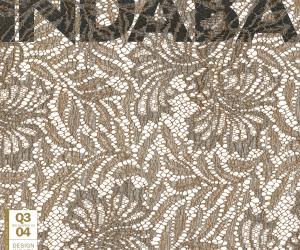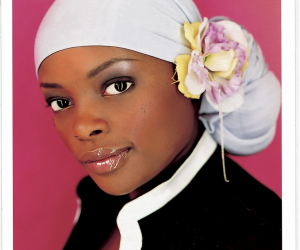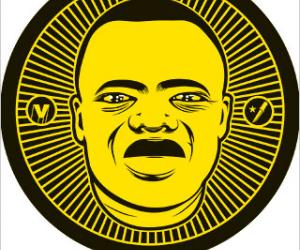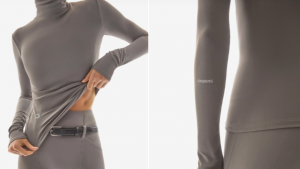First Published in

Question for David Carson
You seem to be a very experimental designer with a "surfer" kind of feel. Is it very frustrating to have to design for corporate companies, and what are the advantages and disadvantages besides paying for your bread and surfboard wax?
Answer: It becomes a new kind of challenge - how can I do something I'm happy with, yet does what they need it to?
I wouldn't want to work at a big in-house corporation design office, but instead do occasional work for my strange mix of clients - Quiksilver, Nine Inch Nails, Surfing magazine, Infinti cars, Golden Nugget Casino in Las Vegas, Marshall Mcluhan estate. So, African Film Festival, etc, keeps things interesting. Corporate clients are afraid of what I do, and don't contact me. The ones that do at least claim they want something different or experimental, and then it becomes a matter of how much they really do want what brought them to me in the first place. As a designer you should be able to address a variety of clients and assignments successfully and uniquely, while primarily focusing on the ones you are truly passionate about.
Question for Nkhensani Nkosi
Why do you use political icons, 1980s flavour e.g. Drum, Sophiatown, etc in your clothing designs?
Answer: Part of my vision for Stoned Cherrie is to create a homegrown brand that is an expression of Afro-urban culture. This culture is made up of iconic moments in our history, political icons and a heritage which I would like to make popular. I feel this is important as it will contribute to instilling a sense of pride in a South African identity. I think the most effective way to create this awareness is to make our culture part of popular culture. Fashion is a fantastic vehicle for this expression.
Question for Peet Pienaar
It is rumored that you used to be employed as a "motivational speaker" for an ad agency. Is this true? If so, what exactly did you do and how has this helped you design Afro Magazine?
Answer: I was the creative stimulator at The Jupiter Drawing Room in Cape Town, I was not really a "motivational speaker" but hopefully motivated some people in the agency to explore possibilities and introduced them to other creative fields like the art, music and theatre world. I gave people projects to work on that would inspire them - I took some people on a tour to the inner city of Johannesburg when it was still taboo; I made them watch strange movies: I got international contemporary artists to speak to them, I even got a DJ from the Ministry of Sound (UK) to teach them to DJ. I cannot say that my work at Jupiter helped me to design Afro Magazine at all, but I think the fact that I did fine art and studied fine art helped me a lot. I could tap easily into arts organisations all over Africa to help finding content, and art helped me to really think out of the norm.
Question for Andries Odendaal and Lewis Blackwell
Is there such a thing as "South African design", except diamond Ndebele shapes, the big five and the rough textures which are always seen in our work? Do we have our own South African/ African identity?
Answer: Andries Odendaal
I don't fully agree with the assumption that one can or should arrive at a single definition of "South African design". Like in any other country, design is the product of its influences, its resources, its constraints and most of all its creative people. It's not necessarily one cohesive thing.
To be overly concerned about identity could be limiting and even counterproductive. An identity is seldom found by dwelling on the problem of identity itself. I prefer to see it as a product of continual exploration and self-development. I believe it's important for creative individuals to be free to explore and experiment without the pressure of having to line up behind some sort of national design banner.
Having said that, I do feel that design, more than any other creative discipline, has a particularly important role to play in the issue of identity. The design object is both an object of self-expression for the designer and an object appropriated by others to assert their identity - whether it's fashion or product design in the case of individuals, or graphic design in the case of business. In this way a 'design identity' is not only defined by what is being produced in a country, but also reflected by what it consumes. In this respect, finding local outlets for innovative local design is important for establishing strong local identities, because it facilitates a dialogue that enables design to feed culture, and culture to feed design in return.
This is something that's been high on the priority list of many South Africans, and we've already seen big changes in the local design landscape. As time goes on I am certain that we will see even stronger South African identities emerge.
Answer: Lewis Blackwell
South African design is not isolated, and should not seek to be isolated, within some small-minded (notion) of its own nationhood. South Africa is a rich mix of cultures, not only through the various ethnic groups that live in the country but through the ongoing flow of global culture that washes over and through the country. Don't reject, but understand and work with this in understanding where South African design is heading. Only by being open to all that is happening in design, all that is apparent in the visual and structural language around you, will you connect with the drivers and the opportunities for design.
For example: the mobile phone is as much a part of South African culture as it is in the US, Europe or Japan. However, the phone perhaps means something different in how it is used at times in South Africa. Lock on to that information and consider how to use it in communication and future design.












